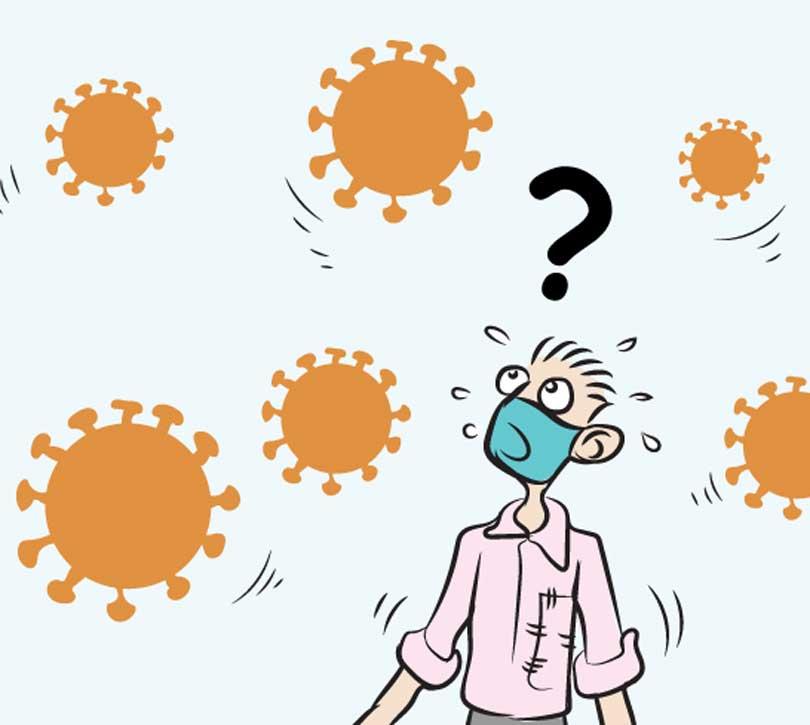22 Jun 2021 - {{hitsCtrl.values.hits}}

It was only a slight difference that we witnessed on the roads last Friday; the last working day during the just concluded travel restrictions and yesterday, the first day after those restrictions ended. As yesterday, during the “travel restrictions” it had been difficult even to cross the road not only in the Colombo city, but also in suburban areas.
It is not clear if the travel restrictions have borne results. However, one could pacify his or her own self pointing out the latest numbers of daily infections of coronavirus released by the Epidemiology Unit of the Health Ministry, which was 3500 in the Mid-May and has gradually come down to around 2000 these days. Nevertheless one would also witness a sharp decline in the number of PCR tests conducted daily in the country. The number of tests which stood at 28,000 last month, is now down to 18,000.
The health authorities have created a causality dilemma in respect of number of daily PCR tests and new COVID patients, reminding us the proverbial “Which came first; the chicken or the egg?” One group claims that the number of tests is decided by the number of patients, while another argues that the process is the other way around.
Health Ministry’s Deputy Director General for Laboratory Services Dr. Sudath Dharmaratne told media on June 14 that the number of PCR tests depends on the demand for the tests and the fluctuation of the numbers is a natural process where nobody arbitrarily decides them. However, The College of Medical Laboratory Science (CMLS) President Ravi Kumudesh states that the figures released by the Health Ministry on the number of tests represents only those who have volunteered to conduct the tests and those who have found to be the contact persons of people who have already contracted the virus. He argues that the real situation of the outbreak could be assessed by random tests. That means the number of patients would proportionally sore when the number of random tests is increased.
It must be recalled that in the Chinese city of Wuhan where the corona virus was first detected in late 2019, authorities launched a campaign to test the entire population of 11 million people in the city within four weeks in May and June last year, after a small cluster of cases was found in a residential compound, sparking concern about a possible second wave of infections. This is contrary to the theory of demand cited by the Deputy Director General for Laboratory Services, and we know that China’s was a success story, in respect of containing COVID 19.
Health authorities sometimes seem to impose their views on the people. When they announced 101 COVID related deaths on June 11, including one that had occurred on February 6, journalists questioned the Deputy Director General of Health Services, Dr. Hemantha Herath whether it was not an abnormal calculation. Yet, he justified the calculation. It seemed that he was of the view that abnormal situations demand abnormal actions. However, this extraordinary calculation had irked President Gotabaya Rajapaksa after which the Chief of the Epidemiology Unit Dr. Sudath Samaraweera was transferred.
It is ironic that even after they announce that around half of the COVID related deaths on some days occur in residences, some authorities still argue that there is no community spread of coronavirus in Sri Lanka. A state of community spread implies that the virus is now circulating in the community, and can infect people with no history of travel to or contact with affected people and areas. Have they been able to explain the past trajectory of the virus up to those home deaths?
The authorities must be transparent and speak in one voice which would help them assess the situation and provide remedies properly while instilling confidence in the people on the health sector.
29 Nov 2024 18 minute ago
29 Nov 2024 39 minute ago
29 Nov 2024 2 hours ago
29 Nov 2024 2 hours ago
29 Nov 2024 3 hours ago